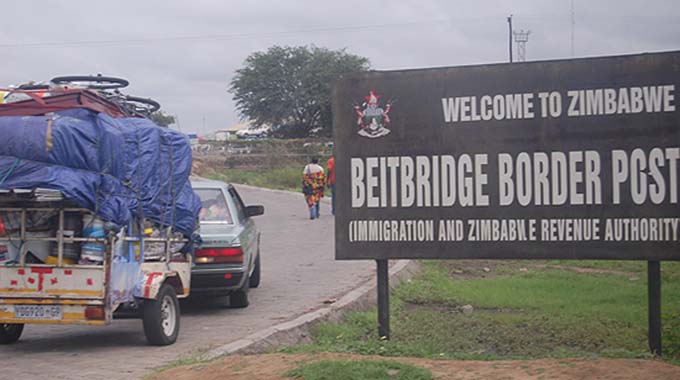Zim braces for locusts threat

Sifelani Tsiko Agric Editor
Resources have been mobilised to minimise the effects of any invasion of the African migratory locust from Botswana and Namibia where outbreaks have been reported.
Shingirai Nyamutukwa, head of the Plant Quarantine and Plant Protection Research Services Institute yesterday said there was an alert following reports of a new round of locust outbreaks.
“Yes, it’s true that Namibia and Botswana are battling another wave of locust outbreaks. The locusts are in all stages from nymphs to adults. We’re keeping check on their control efforts so as to assess risks of invasion into Zimbabwe,” he said.
Last year, locust outbreaks in Zimbabwe, Botswana, Namibia and Zambia were controlled.
Heavy rains have created conducive conditions for swarms to breed in these countries forcing plant protection agencies to take steps to control any outbreaks.
SADC and partner organisations like International Red Locust Control Organisation for Central and Southern Africa (IRLCO-CSA) were working with the four countries to control the pest and protect people’s livelihoods.
FAO launched the Southern Africa emergency locust response and preparedness project which is funded by FAO’s Technical Cooperation Programme.
The UN agency is working with SADC and IRLCO-CSA to support governments of the affected countries and the new project will increase the emergency capacity to support the four affected member states.
The US$500 000 project will focus on emergency response in the locust hotspots and strengthen coordination and information exchange among the affected countries.
In December last year, Nyamutukwa said there were outbreaks of the Senegalese locust in Gokwe, Dera and Kanyendavhu but these were successfully dealt with.
“The Plant Protection Research Institute provided chemicals for control and farmers crops actually recovered,” he said.
“About 107 households had their Pfumvudza plots affected. However, currently there are no outbreaks of the African migratory locust in the Lowveld. We are planning to visit the areas for assessment of locust activities.
“Resources have been mobilised through FAO and SADC although we need to train all our extension staff so that they in turn train farmers on locust identification, biology and management.”
In Namibia and Botswana, the plant protection expert said, some other types of locusts are emerging besides the African migratory locust owing to the wet weather which create favourable factors for all these insects to multiply.
“With a lot of food available due to good rains, we expect the region to have a torrid time to fight locust outbreaks throughout the last half of the season,” Nyamutukwa said.
Locusts are among the most destructive pests in the world. One swarm can contain tens of millions of adults and there are already multiple swarms in Southern Africa. A single swarm can eat as much in one day as 2 500 people.
In 2020, East Africa faced its worst locust attack in decades with swarming grasshoppers posing unprecedented threat.










Comments